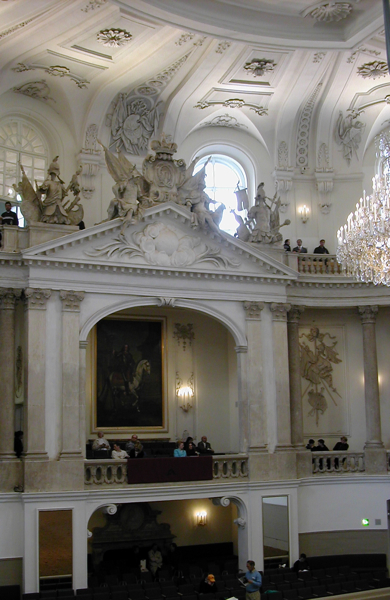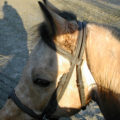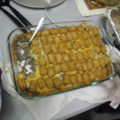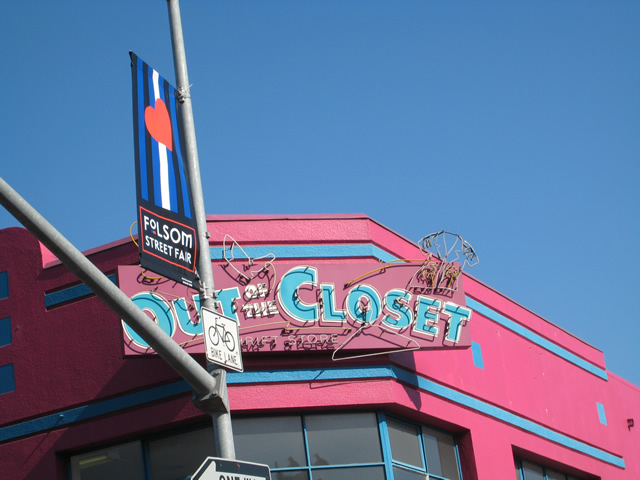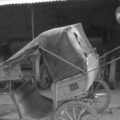From a family trip, the highlight of which (for me) was seeing the Lipizzaner stallions at the Spanish Riding School.
Tag Archives: other travel
Fearsome Flying
“Homeland Security Secretary Tom Ridge said yesterday that he believes security crackdowns over the Christmas holidays, including the cancellation of some passenger flights into the United States, averted a terrorist attack. But intelligence on the threat was so wispy that U.S. officials may never know for sure, he said.”
By John Mintz, Washington Post Staff Writer
Thursday, February 5, 2004; Page A10
It’s not for me to judge the real level of risk, but here’s a thought: al Qaeda doesn’t actually have to get terrorists onto planes now, they only have to make the US government think they will. The flight cancellations and delays cost millions to the airlines and individuals affected, and scrambling US Air Force jets to escort planes is surely also expensive. Maybe all these precautions prevent real threats from being carried out; no one wants to take the chance, of course. But maybe al Qaeda is just toying with us and enjoying the ensuing mess.
Unattainable Knowledge
The Borders bookshop at Dulles airport carries a book called “What Every American Should Know About the Rest of the World.” Placed on a shelf too high to reach.
Globalization vs. Local Culture
Originally published in Adventive’s
I-Branding Digest,
Oct 2, 2001
Context: I am American, but have lived half my life overseas, of which the last ten years in Italy with my Italian husband.
From what I’ve seen in extensive travels and living abroad, most cultures are very resilient, and most adult members of any culture are eventually capable of deciding for themselves what they do and don’t want to assimilate from a foreign culture.
Example: When I was going to high school in India 20+ years ago, an Indian businessman who had gone to university in the US opened a restaurant in Delhi (Nirula’s). It consciously imitated Americanisms such as fast food and 31 flavors of ice cream. Some of its patrons were foreigners like myself who occasionally craved a taste of “home”. But the huge majority were Indians.
When I returned to India four years later for college study abroad year, Nirula’s was thriving and had become a countrywide franchise. One of my classmates argued that it was an example of American cultural imperialism. From his point of view, the entrance of McDonald’s into India must have been even worse. And yet, and yet…
Obviously there is demand in India – by Indians! – for both Nirula’s and McDonald’s. In both cases, an American concept has been not merely transplanted, but adapted to its new environment. I don’t expect to ever see beef hamburgers served anywhere in India, but “mutton” and veggie hamburgers are selling very nicely. These restaurants also serve Indian snack foods that you would never find in an American McDonald’s.
American fast-food franchises the world over have adapted in similar ways to local tastes and cultures. In any country you go to, for a quick education in cultural differences, step into the local Kentucky Fried Chicken. Sure, the decor, colors, typefaces, etc. will look familiar – those are aspects of the brand identity that people are reassured by and want to retain. But the menu may contain quite a few surprises. McDonald’s in Italy serves espresso. And beer. And offers a choice of ketchup or mayonnaise with your fries.
Similarly, Indian languages and music have taken in what they like from the west and adapted it to their own needs. In the Seventies, disco music was as popular in India as the rest of the planet. Nowadays you get delightful mixes such as traditional bhangra made into dance music. This music is brought back across the ocean both by Indian emigrants and strange people like myself, where it can add a new dimension to the Western cultures which helped to create it – I’m told bhangra is very popular in some London dance clubs.
Oh, and another example: Coca Cola. Biggest brand on the planet, right? Remember a few years ago when there was a huge fuss in the US about “New Coke” vs. “Classic Coke”? “How dare they touch the sacred recipe.” Well, folks, the recipe for Coke in other countries has been different for a long time. In Asia it’s sweeter, because people there prefer it that way. In Europe it’s made with cane or beet sugar, instead of corn syrup (which I think tastes a lot better).
So who’s imperializing whom?
Note (Oct 7, 2010) – Interesting to see that Nirula’s is now using the tag line “It’s desilicious”. Desi is Hindi for “of the country,” i.e. Indian. When Nirula’s was founded, foreign was cool. Nowadays being Indian is cool. And that’s cool!

